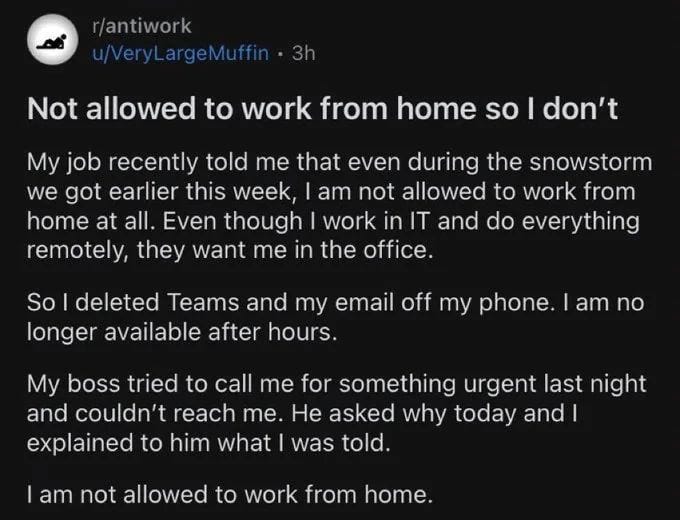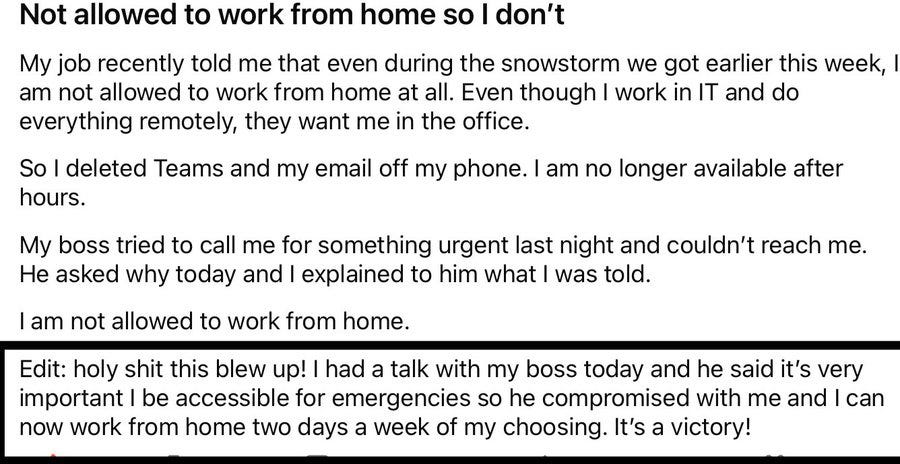Solving employee loneliness is the first step to better teams
ALSO: live careers event tickets on sale now
‘We’re still lonely at work,’ declared an outstanding article in Harvard Business Review this week. This is a recurrent theme of discourse this year - this Wall Street Journal ‘The Loneliness of the American Worker’ is essential reading and transcends the US nature of the headline. (The writer also posted it as a thread on Twitter, which is also worth checking out). Gallup’s latest report suggests that around a fifth of workers feel lonely at work, other data suggests that over 40% of workers say they don’t have a single friend in their workplace.
The HBR article sets about researching the condition - and seeing how they can solve it. 1000 workers were categorised by their level of loneliness (highly lonely, moderately lonely and minimally lonely) which led to some early revelations:
Myth #1: ‘Loneliness can be solved with in-person work’ - as the authors say ‘to villainise remote work as the culprit for loneliness is to miss the nuances of the problem’. While fully remote workers were the most lonely, they found that whether someone works two days or five days in the office made no difference to their level of loneliness.
Myth #2: ‘Teams will solve loneliness’. Just the very fact of being on a team didn’t resolve loneliness: ‘In fact, being on a team can make them feel even lonelier when the closeness they expect their team to provide does not come to pass’.
Myth #3: ‘Lonely employees are needier than others’ - it is not uncommon for the situation of workers to be ascribed to their perceived failings in the eyes of bosses. (Generational blame is especially common).
Most lonely workers feel that there is little done to encourage connection at their workplace, frequently citing the lack of time given to forging connections with each other. Whereas the authors believe the most effective organisations actually ‘design slack into the workflow’. This is strongly consistent with both the work of Zeynep Ton on creating good jobs and the words of Professor Robert Putnam that I quoted a few weeks ago. One of the biggest barriers to forming connections was often cited as being short staffed, again something that Zeynep Ton has described as ‘ruinous’.
The best organisations not only covered the hygiene factors of being fully staffed and having slack in the system, but also cultivated ‘a culture of connection’.
The importance of slack in creating the circumstances for social connection is vital One employee working flat out told the writers, ‘our environment and the amount of work we have doesn’t allow us to get up and engage with each other. We’re constantly stressed.’
An adjacent article published last month in Dazed & Confused took this work intensity and applied it to our social lives. The average person has 5 close friends in their lives, a number that has been consistent for decades, but is now spending three hours a week with them, rather than six hours a decade ago.
The things that contributed to these connective cultures varied from the simple and cheap (team drinks hours, devoting meeting time to social chat or taking time to eat lunch together), to activities that required a little more budget (networking programs, peer relationship-building, employee resource groups, and team offsites). ‘In aggregate, the [less lonely workers] reported having 31% more organisation-sponsored social opportunities than the highly lonely group’. The key lesson is not to complicate these things, the three options that proved most popular with all workers were: ‘free communal lunches, meetings that devote time to personal chitchat, and happy hours’.
Not every initiative needs to be in person. One worker from a health insurance company described how their team:
‘…started to implement (virtual) meetings where everyone’s voice is heard. You are called upon if you’d like to share how you’re feeling about the job itself or your personal life. Everyone really feels heard and important.’
Still interested?
How workplace rituals can build culture
☝️This is a scientifically observable effect of course, try the Pygmalion Effect on your own team members…
How do you build psychological safety? I got a lot from a post by psychologist Laëtitia Vitaud going into detail on the building blocks of PS this week
Media agency Publicis fired almost 100 employees for not observing their 3-day-in RTO policies. (There was a suggestion that they fired employees who hadn’t come into the office at least 25 times this year). The company’s policy is: 3 day in the office each week, including Monday and prohibiting consecutive remote working days. (The consecutive working day rule is generally used to prevent workers going to work from a different place for a long weekend)
The city of Tulsa, Oklahoma offered to pay remote workers $10,000 (£7.7k) to move to the city for at least a year. Those who moved saved an additional $25,000 (£19k) on annual housing costs. The influx brought in new income tax and consumer spending, reversing the city’s recent brain drain. An interesting case study of incentivised work schemes
Interesting article about the companies who are best rated for careers growth. Firms who invest in their workers outperformed the big tech giants
Live event news: On Monday 2nd December I'm joining forces with podcasting icons Sarah Ellis, Helen Tupper, Isabel Berwick and Jimmy McLoughlin for 'The Career Collective'. We'll be talking work, careers and all things jobs related.
All of the proceeds from the event will be split between two brilliant charities: Beam (using tech to help the left behind) and upReach (helping to deliver social mobility).
Tickets are £40 but there's an early bird price of £30 if you use code seeyouthere and book by 1st November 2024.









Great stuff!! Re: the myth of remote causing loneliness - our blue collar workers are the ones most at risk of loneliness and poor mental health. As their work is measured in time (clock in, clock out, time spent per action etc) they are less likely to be given time to access the on-site events staff employees have access to. It’s a hard balance to make, ensuring people paid for their time doing tasks, and them accessing corp culture activities.